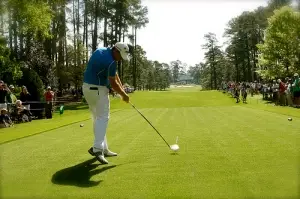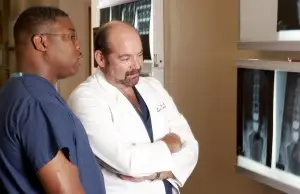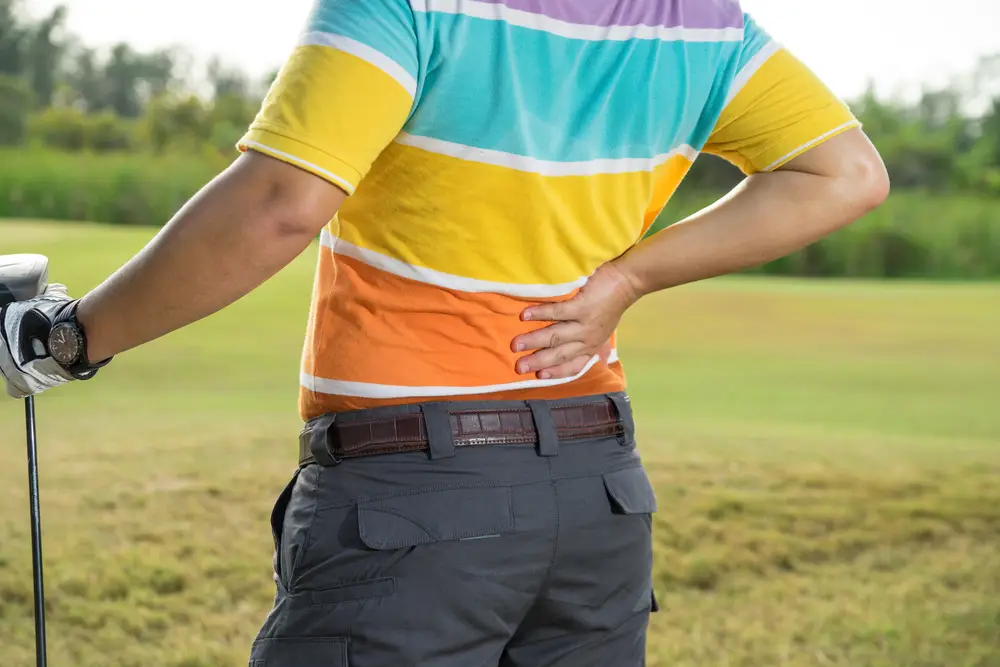
The annual quest for the most recognizable coat in sports is on again and the green jacket with the “Augusta National Golf Club” logo is up for grabs at the Masters Golf tournament. Watching the best golfers in the world play this stunning course is enough to motivate scratch golfers and duffers alike to head over to the driving range or neighborhood golf course and hit a few. However, sometimes playing this game leads to some unintended consequences and the skills of the back experts at Texas Back Institute are needed.
Before getting into the occupational hazards that every pro golfer has had to deal with at one time or another – back pain – it’s interesting to offer PGA fans a quick look at the group of golfers whom the experts in the game think have the best chance of wearing that jacket. Some, such as Tiger Woods, are internationally known and others are just beginning to garner sports headlines.
Players to Watch at the Masters
Never underestimate the defending champ. Because Bubba Watson won 2012 Masters in spectacular fashion – in a sudden-death playoff with a remarkable, 140 yard hook shot – he will be confident and ready to repeat his feat. The others on the course will have something to say about this.
Another name being heard around the hallowed halls of Augusta as a potential Masters champ is Ian Poulter. He finished 7th in last year’s Masters but had golf fans around the world talking about his great play for the European Ryder Cup team.
Is Rory McIlroy the heir apparent to the king of the course – Tiger Wood? Some smart golfers say yes and many expect this 23- year old from Northern Ireland to be in battling with Wood during the entire tournament. Unless something unusual happens, look for McIlroy name near the top of the leaderboard.
Tiger Woods is on a roll, again and this makes him the odds-on favorite to win his 5th Masters tournament. He has won three of his last six tournaments, he obviously plays Augusta extremely well (largely because this course favors great putters like Woods) and his confidence seems rise when the limelight is on him.
Meet Pro Golfer Donnie Wood
Even though there is no contact in the game of golf, the sport can wreak havoc with a player’s back. Just ask Donnie Wood. He’s a player on the senior tour who came to Texas Back Institute several years ago in so much pain that he found it difficult to get out of bed, much less drive a golf ball.
Often, older golfers such as Donnie experience chronic back pain as a result of wear and tear on their vertebrae. In his case, the pad that acts as a “shock absorber” between these vertebrae bones, called a disc, was damaged from injury or repetitive wear.
“As recently as 12 years ago, someone suffering from chronic back pain that was caused by degenerated or injured discs had only one surgical option,” said Dr. Jack Zigler of the Texas Back Institute. “Spinal fusion was the only choice if non-surgical therapy didn’t fix the problem.” All of that changed in 2000, when three surgeons at Texas Back Institute performed the first artificial disc replacement surgeries in U.S. Since then, these three innovative surgeons – Drs. Zigler, Blumenthal and Guyer – have performed more than 1600 artificial disc replacements.
Golf and Back Pain
With the Masters tournament putting the sport of golf on the minds of men and women players, we asked Dr. Zigler for some advice – not about his short or long game – about the causes of chronic back pain.

What is it about a golf swing that irritates the back of someone with minor back pain?
Dr. Zigler said, “Rotation, or twisting of the spine, stresses all components (the discs, muscles, and ligaments) in directions that are not used in normal walking, standing, sitting, or even lifting activities. This is why a sweeping or mopping motion, even pulling bed sheets, are some of the first movements noted to be painful when we injure our backs. The golf swing requires a tremendous coiling and uncoiling of the trunk above a relatively stable pelvis, stretching strained structures on the backswing and then actively accelerating them through the power portion of the swing.”
When should someone who enjoys playing golf be concerned about back pain and when should they seek a medical opinion?
“Normal aches are common, particularly if one is only an occasional golfer. Taking some Ibuprofen or similar non-steroidal anti-inflammatory medication and stretching very well before playing are the best safeguards. But even regular players can experience pain from overuse or over-straining of the back. With age, we all develop degenerative changes in our discs and recovery from minor injuries can take longer. Pain that persists despite a week or two of rest, or pain that occurs after every attempt at play should be evaluated. Similarly, any persistent arm or leg pain, numbness or tingling in the arms or legs, or any muscle weakness needs to be evaluated as soon as possible.”
Senior golfer Donnie Wood had a serious problem with his back, one that required artificial disc replacement. What caused this disc damage?
“As we all age, the structure of our discs, muscles, and ligaments in the spine change. There is a loss of water content and a change in the molecules of the proteins and sugars that are the structural framework of our soft tissues. Layered on these age-related changes are the small repetitive injuries that occur throughout our lives. These cumulative degenerative changes result in a stiffer, less forgiving disc that loses much of its shock absorber ability, and is less resilient to further stress and injury. Donnie’s disc had worn to a point that would not allow him to use his back the way he wanted without resulting in increased pain and protective muscle spasm. With no ability for the disc to heal itself, his options were to cut back on his activity (his work as well as golf, neither of which was a reasonable option for him) or to consider surgery. A fusion might relieve his pain nearly as well as an artificial disc, but it would put even more stress on the other segments of his spine. Disc replacement was a terrific option for Donnie,” Dr. Zigler concluded.
What did Donnie need to do after the operation (for rehab) in order to get back into golf-shape?
“For the first few weeks, he did a lot of walking so his muscles could recover from the surgery, and his artificial disc could heal to the bone in his spine. After 4 weeks or so, gentle range-of-motion exercise and stretching were done. Three to four weeks after that, core strengthening exercises were started and progressively increased. For most golfers, stretching and core strengthening are the keys to getting back into golf shape. The same strategy is used after disc replacement. I usually allow golfers to start putting at 4-6 weeks, chipping at 8-10 weeks, and start taking full swings at 10-12 weeks after surgery.”
He’s Back in the Swing
The mechanics of swinging a golf club can cause serious pain when a vertebrae disc is damaged. Fortunately, there are alternatives available to professional and weekend golfers. Here’s how Donnie Wood sees it.
[youtube=http://www.youtube.com/watch?v=bgf6RsRC2v8]
Top Photo credit: Flckr Creative Commons Pocketwiley
All others: Texas Back Institute


